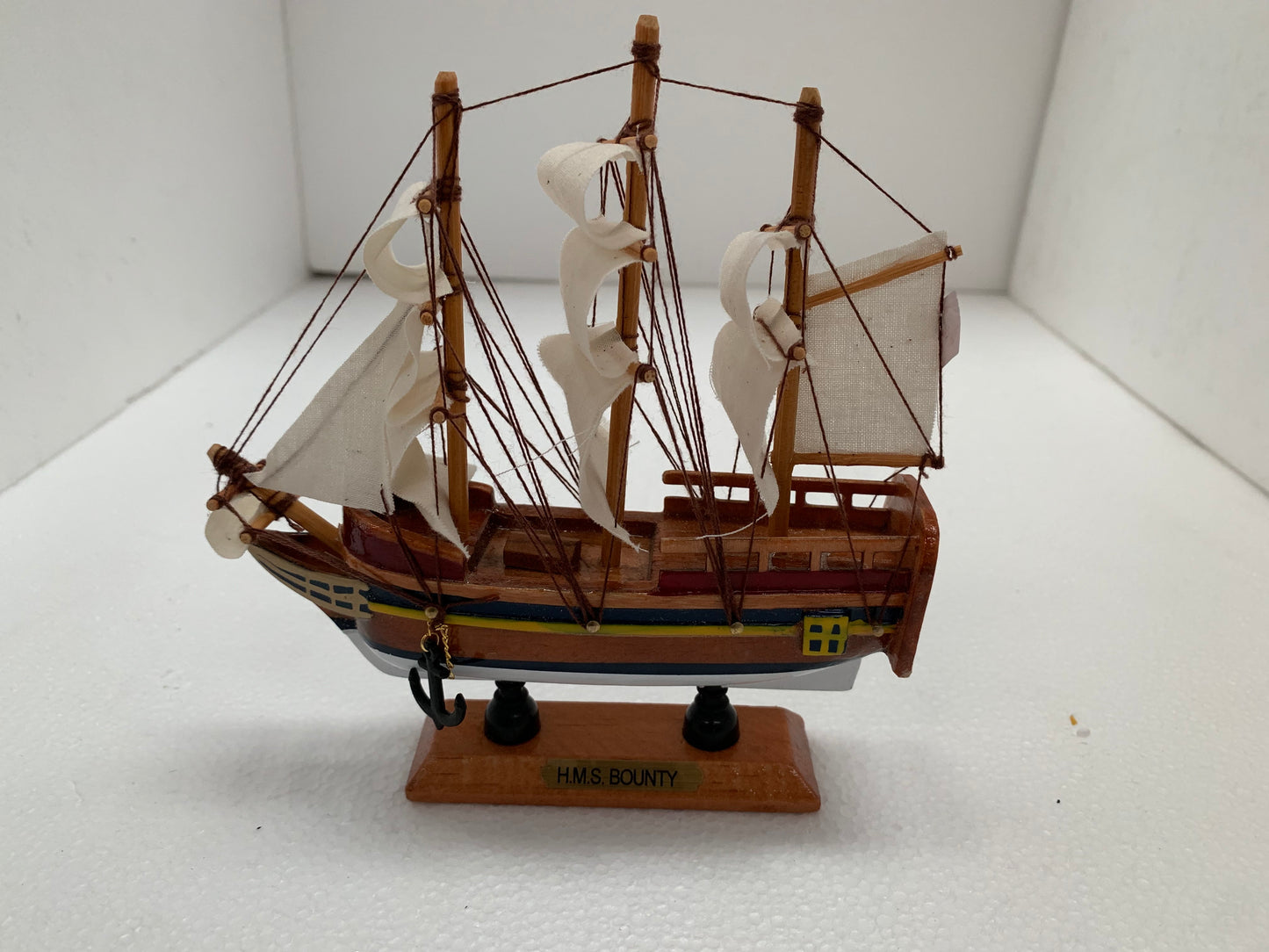HMS Bounty

HMS Bounty
HMS Bounty, made famous by a mutiny, was built in 1784 at the Blaydes shipyard in Hull, Yorkshire, as a collier named Bethia. It was renamed after being purchased by the Royal Navy for £1,950 in May 1787. It was three-masted, 28-metres long overall, and 7.6-metres across at its widest point, and registered at 230 tons burthen. Its armament was four short four-pounder carriage guns and ten half-pounder swivel guns, supplemented by small arms such as muskets. As it was rated by the Admiralty as a cutter, the smallest category of warship, its commander would be a lieutenant rather than a post-captain and would be the only commissioned officer on board. Nor did a cutter warrant the usual detachment of Royal Marines that naval commanders could use to enforce their authority.
Bounty had been acquired to transport breadfruit plants from Tahiti to the British colonies in the West Indies. The expedition was promoted by the Royal Society and organised by its president Sir Joseph Banks, who shared the view of Caribbean plantation owners that breadfruit might grow well there and provide cheap food for the slaves. Bounty was refitted under Banks' supervision at Deptford Dockyard on the River Thames. The great cabin, normally the quarters of the ship's captain, was converted into a greenhouse for over a thousand potted breadfruit plants, with glazed windows, skylights, and a lead-covered deck and drainage system to prevent the waste of fresh water. The space required for these arrangements in the small ship meant that the crew and officers would endure severe overcrowding for the duration of the long voyage.

